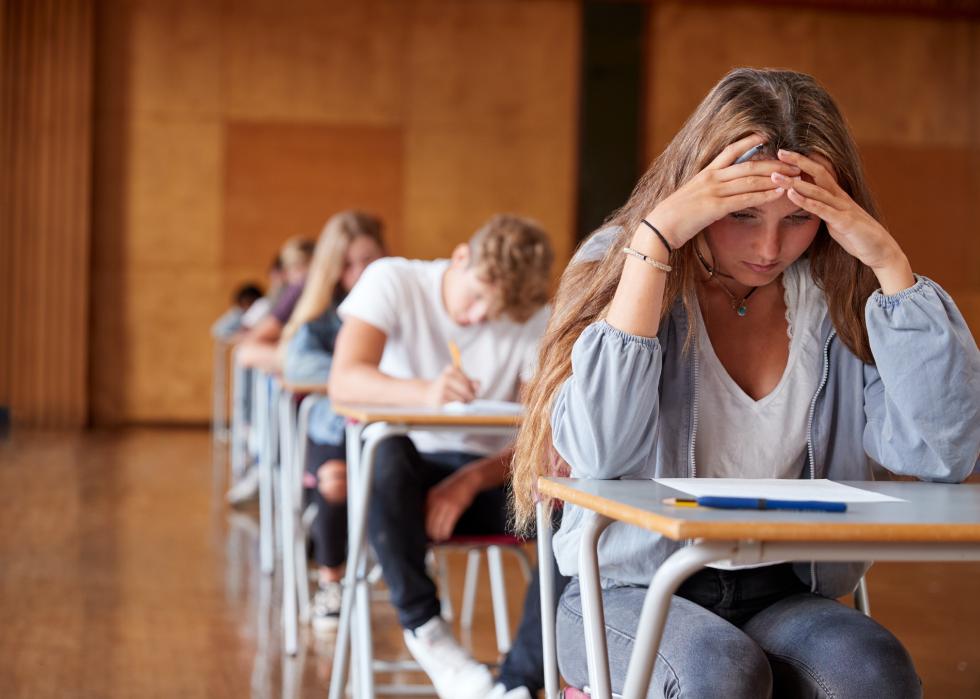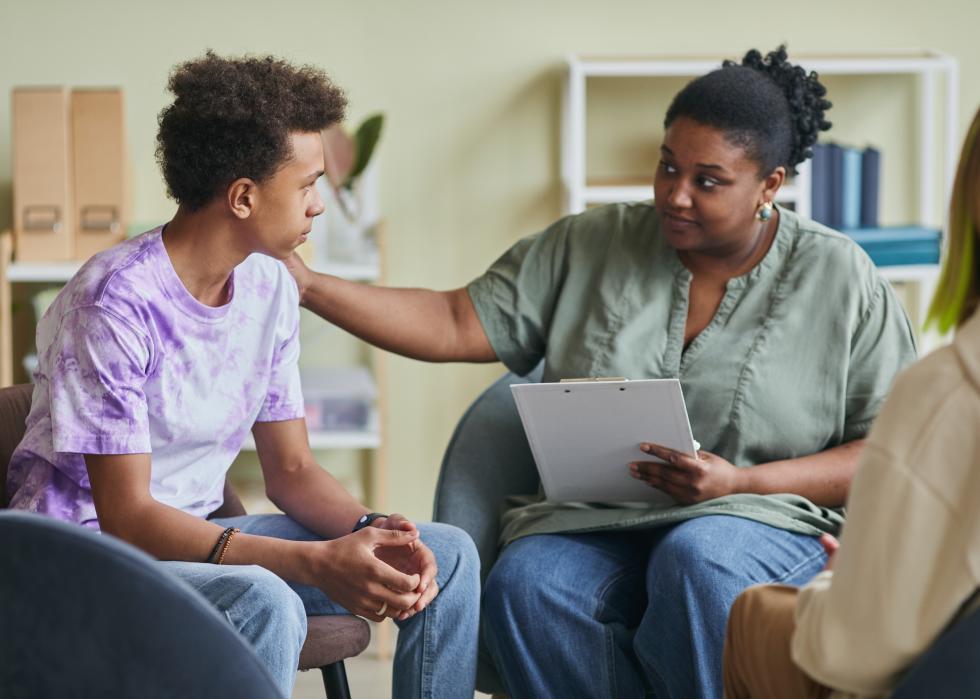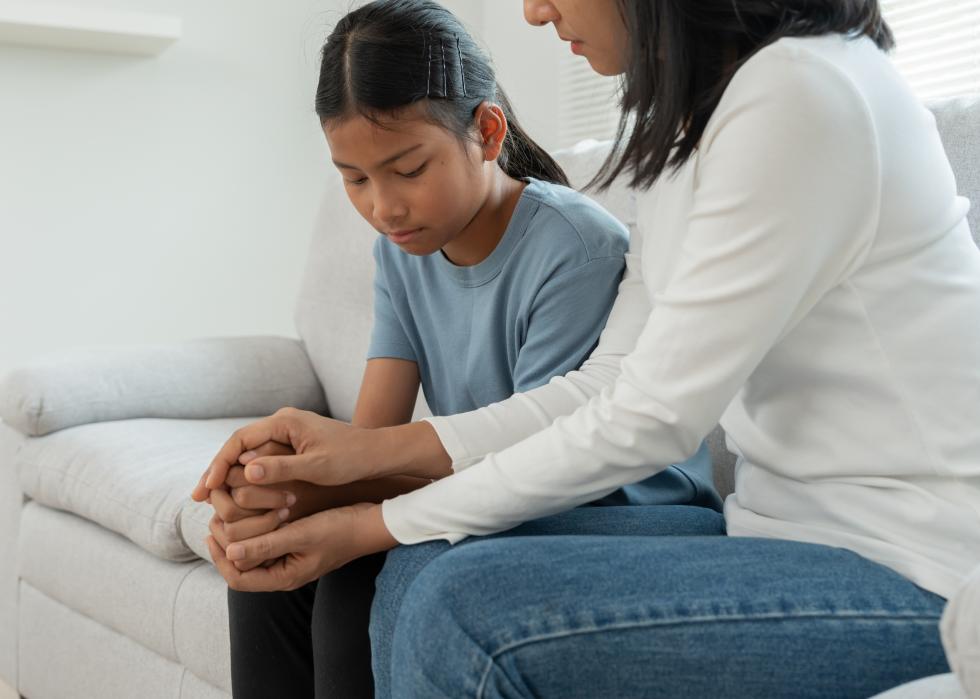
5 statistics that explain the current teen mental health crisis
This story originally appeared on Counseling Schools and was produced and distributed in partnership with Stacker Studio.
5 statistics that explain the current teen mental health crisis
Over the past few years, teens have experienced an alarming increase in mental illness in the U.S.
The 2010s, in particular, marked a decade of declining mental health capped off by the disruptive impact of the COVID-19 pandemic. By 2022, national survey data from the Department of Health and Human Services indicates that around 1 in every 5 adolescents suffered from a major depressive episode in the previous year, continuing an upward trend in depression that began around 2013.
Counseling Schools analyzed data from the Centers for Disease Control and Prevention and the Department of Health and Human Services to illustrate some of the most concerning statistics in youth mental health today.
The trend has captured the attention of health professionals in every corner of the country, and in recent years has even resulted in a mobilization by the federal government to address what the surgeon general describes as a "devastating" challenge for teens.
The onset of COVID-19 resulted in unprecedented public measures to save lives, including the shutdown of schools across the nation. The death of parents and grandparents overcome by the novel disease, as well as the loss of milestone life experiences like school dances, birthday celebrations, and gatherings with peers, were just one more headwind for kids.
Without a significant source of socialization and learning, students' mental health took a turn for the worse—a trend that's lingered since schools reopened.
The nation's top doctor has called on families, educators, health care professionals, and even tech companies to take part in addressing the crisis facing children. Regardless of your role, understanding the scope of the mental illness facing this generation of kids can be a worthy first step in combating it.

Hopelessness feelings in school-age children rise 40% over 10 years
Feelings of persistent sadness or hopelessness grew by 40% from 2009 to 2019, according to the CDC's Youth Risk Behavior Survey.
Hopelessness is a normal emotion for children to feel occasionally, but when it's persistent, it can signal a deeper struggle with depression. It can also be a difficult feeling to judge in children, as hopelessness can make a child act in ways that may appear to adults as mere laziness or troublemaking, according to the CDC.
Lesbian, gay, bisexual, and queer-identifying students reported the highest levels of depression in any group, with about 2 in 3 feeling persistently sad or hopeless, according to the survey. The CDC did not ask about gender identity so it can't be used to identify the mental health conditions of transgender students. Research indicates transgender youth face a higher risk of suicide and mental health crises than their peers.

Depression and anxiety affected almost 30% more children in 2020 compared to 2016
Depression in children grew by 27%, and anxiety in children grew by 29% over a five-year span including the first year of the pandemic, according to the National Survey of Children's Health. Federal officials and experts point to several possible explanations for the worsening conditions, with COVID-19 being only one of them.
More kids today than ever have smartphones, and teens' near-constant use of social media is broadly suspected to have some impact on their mental well-being. Psychologists have pointed out that the growth of early social media sites and the prevalence of smartphones tracks with the increase in mental illness over the last decade. Previous internal research from Facebook has found that Instagram was harmful to teens, making girls in particular feel worse about their body image—and sometimes leading to thoughts of suicide.
Other factors can influence a teen's depression and anxiety, including the mental health of the adults they live with, poverty, discrimination, abuse, exposure to violence, trauma, drug use, and hereditary and biological conditions such as illness.

Youth suicides grew by 57% over a decade
Some combination of those challenges has manifested in higher rates of suicide for the youngest and most vulnerable Americans. In 2018, deaths by suicide in youth ages 10-24 increased by 57% from 2007, according to the National Center for Health Statistics.
Most recently, about 13% of adolescents ages 12-17 reported having serious thoughts of suicide in 2022, according to the Substance Abuse and Mental Health Services Administration.
Adolescent girls struggled particularly hard with suicide during the pandemic years. In 2021, emergency department visits for suicide attempts among teen girls increased by 51%, as opposed to 4% for boys, compared to the same time period pre-pandemic in 2019, according to a CDC study.
There are also racial disparities in suicides, with Black children twice as likely to die by suicide than their white peers. From 2018-2021 Black youth ages 10-24 saw the largest increase in suicide compared to any other demographic group, rising 37%, according to the CDC.

Almost half of LGBTQ+ youth considered suicide in 2021
The emotional distress has had a uniquely disproportionate effect on LGBTQ+ youth, among whom nearly half considered suicide in 2021. A small fraction of the American population identifies as LGBTQ+, and embracing that identity in public and with loved ones can lead to stigmatization, isolation, and sometimes violence. That dynamic can be especially trying for an adolescent person still heavily dependent on their immediate family for everyday needs and emotional support.
From proposing restrictions dictating which public restrooms they can use to passing bans on gender-affirming care, lawmakers have passed a record number of laws in recent years that would limit the rights of LGBTQ+ individuals. Many of those laws particularly impact transgender people. Psychological research draws a direct line between discriminatory laws and the mental health of transgender youth, who make up 5% of the young adult population.
This population of teenagers and young adults can also struggle to find mental health treatment that is tailored to their specific needs. A survey published in JAMA Pediatrics found that in 2020 fewer than 1 in 3 mental health services provided explicit support for things like the coming out process and gender-affirming therapy.

1 in 5 teens do not get treatment for their mental health struggles
Much like the adult population, treatment for mental illness is not ubiquitous for American youth. The most recent data available from the CDC indicate about 78% of children ages 12-17 with mental health problems received some form of mental health treatment in 2019. That means that roughly 1 in 5 do not receive therapy, medication, or other forms of treatment.
Other studies show the ability to access treatment is more difficult for LGBTQ+ teens. Sixty percent of LGBTQ+ youth ages 13-24 were unable to get mental health care treatment despite wanting it, according to a Trevor Project survey in 2021.
Schools can be an important avenue to deliver children nutritious meals, safe environments from potentially abusive home lives, and other services like tutoring. And while they could also bridge the gap in the treatment of mental health issues, many do not, according to data from the National Center for Education Statistics. In the 2019-2020 school year, just 42% of schools offered some kind of treatment for mental illness. Those disparities have led to calls to expand the mental health workforce in schools, and there are signs of improvement. In the 2021-22 school year, school counselor-to-student ratios fell to their lowest levels in three decades.
Editor's note: If you or someone you know are experiencing a mental health crisis or thoughts of suicide, call the Suicide and Crisis Lifeline at 9-8-8 for professional help.
Story editing by Ashleigh Graf. Copy editing by Tim Bruns. Photo selection by Clarese Moller.



